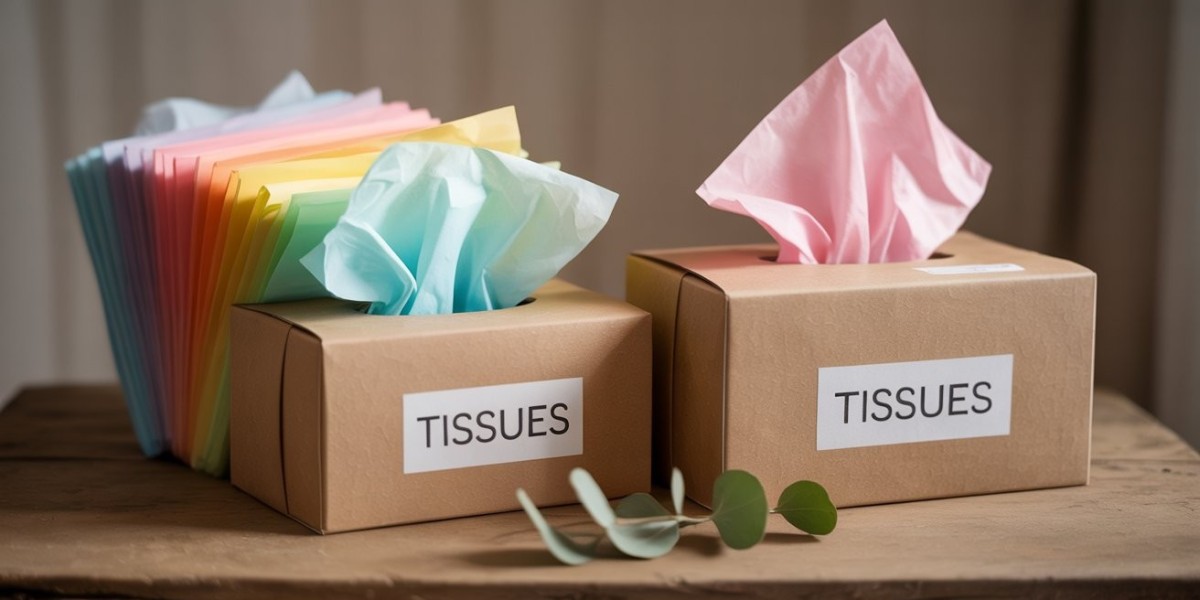When placing bulk orders for tissue paper in 2025, B2B buyers face a landscape transformed by shifting market demands, sustainability pressures, and technological advances. Understanding the key factors—from quality specifications to supplier reliability—will help businesses secure the right product, on time and within budget.
Market Trends and Demand Forecasts
Rising Hygiene Standards: Post-pandemic awareness keeps demand for facial and toilet tissue high in commercial and hospitality sectors.
E-commerce Growth: Online retailers increasingly include tissue paper in packaging kits for an elevated unboxing experience.
Green Purchasing: More businesses insist on recycled and eco-certified tissue products to meet corporate social responsibility goals.
Quality and Specification Considerations
Ply and GSM: Identify whether single-ply or multi-ply is required; check grams per square meter (GSM) for strength and absorbency.
Softness vs. Strength: For restrooms or napkins, balance softness with durability to avoid customer complaints about tearing.
Certification: Look for FSC or PEFC labels, and seek ISO or equivalent quality management compliance.
Pricing and Total Cost of Ownership
Volume Discounts: Many suppliers tier prices; confirming annual or quarterly commitments can unlock deeper discounts.
Hidden Fees: Factor in freight surcharges, fuel costs, and handling charges when comparing quotes.
Waste Reduction: Choosing higher-quality tissue may cost more upfront but reduces tear rates and replacement frequency, lowering long-term costs.
Supplier Selection and Reliability
Track Record: Prioritize suppliers with verifiable on-time delivery rates and strong references in your industry.
Production Capacity: Ensure the manufacturer has enough capacity or backup facilities to meet your peak-season demands.
Transparency: Ask for batch-level traceability and quality test reports to guarantee consistency.
Logistics and Storage
Warehouse Space: Tissue paper is bulky; confirm you have adequate, dry storage to protect against moisture damage.
Just-in-Time Delivery: If storage is limited, arrange regular smaller deliveries rather than one large shipment.
Packaging: Verify that pallets are securely wrapped and labeled for easy handling and inventory accuracy.
Sustainability and Circular Economy
Recycled Content: Increasing numbers of buyers require post-consumer recycled fibers.
Energy-Efficient Production: Inquire about the mill’s energy sources and carbon-neutral initiatives.
End-of-Life Disposal: Choose tissue paper that is fully biodegradable or compostable to align with zero-waste goals.
Customization Options
Colored or Printed Tissue: Some suppliers now offer bulk orders in custom colors or simple pattern printing to match brand identity.
Package Branding: Coordinated outer wraps or bundled kits can reinforce corporate branding at every touchpoint.
Conclusion
In 2025, sourcing bulk tissue paper requires more than just comparing prices. B2B buyers must evaluate quality, sustainability credentials, logistical needs, and supplier reliability. By taking a holistic approach and partnering with vendors who offer transparency and flexibility, businesses can secure a cost-effective supply chain. For those looking to differentiate their offerings, exploring private label tissue paper can provide a unique branding advantage.







